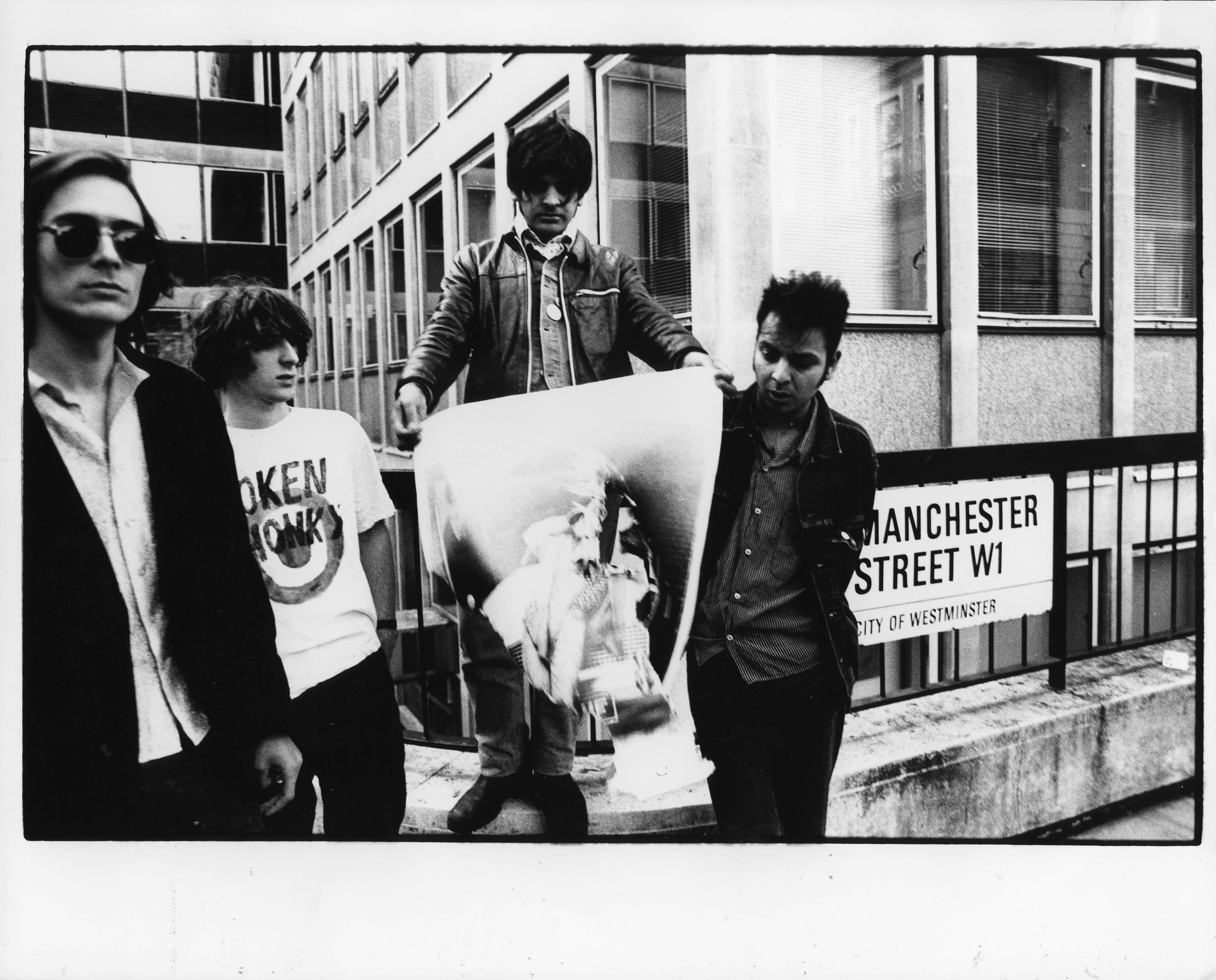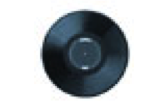| Cornershop‘s “Brimful of Asha” is one of those songs that are simultaneously poppy and deeply meaningful. Unfortunately the wealth of meaning in the lyrics may not be readily apparent to most non-desis, or for that matter, to many desis either.
At the risk of diminishing the enjoyment of those who do understand the somewhat esoteric message, this essay attempts to make it clear enough for anybody to appreciate. In the process we’ll be touching on Indian culture in general and specifically on that great opiate of the Indian masses, the movie industry.
Cornershop is an East-West fusion pop-rock group. The East part comes from Tjinder Singh, who grew up in England but is of Punjabi origin. Tjinder strongly identifies with his Indian heritage; the group’s name itself derives from a play on the stereotype of the Indian/Pakistani street-corner grocery store clerk.
“Brimful of Asha” came out in 1997. With its catchy refrain it became a hit on US radio, as well as in Cornershop’s native UK.
To understand the song, one must understand the Indian movie industry. Ever since cinema was introduced to India, most commercial movies have been heavy, sweet, musical productions. The song-and-dance interludes are not incidentals, but staples, and often are what make or break a movie. An American friend of mine was under the impression that singing was a necessary skill for Indian actors and actresses! Actually, the singing is almost always done by background singers. The background singers, of course, are not required to possess charisma or looks, and in fact in early times, care was taken to not expose them in the media, to preserve the romantic association with their voices in the minds of the moviegoing public.
Why is all this so important? Right from the beginning, movies took over the hearts and lives of common Indians in a manner that nothing has done before or since. The happiness, the tragedy, the passionate and tender love, and the conflict are all designed to speak to the melodrama-loving Indian heart. As Hindi grew more popular, Hindi movies took over the whole country. The heart of the Hindi film industry in Bombay, whimsically nicknamed Bollywood, eventually became a force larger than the one it was named after. The songs are no exception, and over the last sixty years or so filmi music, as it is called, has become by far the most popular kind in India.
Two female background singers perhaps distinguish themselves from the rest in sheer prolificness and popularity: Asha Bhonsle and Lata Mangeshkar. The two, as it happens, are sisters, and recently there has been much focus on their professional and sibling rivalry. At any rate, their singing formed the emotional soundtrack of India, as it were, for many years.
That, in essence, is what “Brimful of Asha” is all about.
Here are the lyrics, with notes:
There’s dancing behind movie scenes,
Behind those movie screens – saddi rani.
Saddi rani – “our queen”, in Punjabi.
She’s the one that keeps the dream alive,
From the morning, past the evening, till the end of the light.
Brimful of Asha on the forty-five.
Well, it’s a brimful of Asha on the forty-five. (x2)
‘Asha’ is a pun. It refers to Asha Bhosle, but the word also means “hope”. What does “hope” signify in this context? The movies and songs are in many ways a fantasy of something better than people’s own lives. For instance, Indian youth whose overbearing parents would never permit them to marry those they fall in love with may yet indulge themselves in the romances they see onscreen and hear about in these ballads. The “45”, for you of the CD player generation, is the 45 revolutions-per-minute record player.
Incidentally, the word ‘Asha’ is normally pronounced with both ‘a’s long, as in ‘father’. Tjinder, with his British accent, pronounces it like “Asher”, touchingly making the song both more and less genuine at the same time. As a result the refrain often gets misheard, sometimes in quite hilarious ways.
And singing
Illuminate the main streets and the cinema aisles.
We don’t care about no government warning,
About the promotion of the simple life and the dams they are building.
What is he talking about? The movies and songs are an escape: they are what allow people to forget important concerns, at least for a while. The reference to dams might need a bit of explanation. In India, these often are unnecessarily huge and costly projects that are designed that way with the aim of being points of prestige, and besides, for lining the pockets of politicians and contractors. They displace thousands of people and impact the environment in massive ways. The project currently approved on the Narmada is one present-day example. So these are issues that people should be worried about.
But this escapism is not presented as being bad. The spirit of the song is that movie fantasy is a lovely and comfortable thing.
Everybody needs a bosom for a pillow, everybody needs a bosom, (x3)
Isn’t that a beautiful line? But the last one’s even better:
Everybody needs a bosom for a pillow, mine’s on the forty-five.
To me, at least, that’s poetry.
Mohammed Rafi – forty-five. Lata Mangeshkar – forty-five.
Solid state radio – forty-five. Ferguson Mono – forty-five.
Non public – forty-five.
Jacques Dutronc and the Bolan Boogies …
The Heavy Hitters and the chi-chi music …
All Indian radio – forty-five. Two in ones – forty-five.
Ovvo records – forty-five. Trojan records – forty-five.
These are historic icons of filmi and pop music. Rafi and Mangeshkar are other background singers. Solid state radio is self-explanatory. All-India Radio is the one, public radio station that existed all the decades before privatized radio stations and FM came to India. Two-in-ones are radio-cum-casette players. I confess the other references are strange to me.
7-7,000 piece orchestra set,
Huge orchestras are intrinsic to filmi music. Of course 7000 is a little hyperbolic.
Everybody needs a bosom for a pillow; mine’s on the RPM…
(fadeout)
Why do I find this song so remarkable? Most people, when talking of Indian culture, tend to make statements which fall in two categories. The first consists of glorifications of classical Indian culture, philosophy, tradition, and so forth. The second consists of lamentations about the corruption, poverty, dirt, and how the whole country is going to the dogs.
It is relatively unusual for someone to touch on the spirit of the ornery hard-bitten yet cheerful street-corner Indian, the one who always has to worry about the expenses for next month but yet decides on an impulse to splurge on hot samosas. Cornershop manages to celebrate and showcase this joie de vivre, and to do so with skill and sensitivity, and for this, they deserve to be congratulated. |





